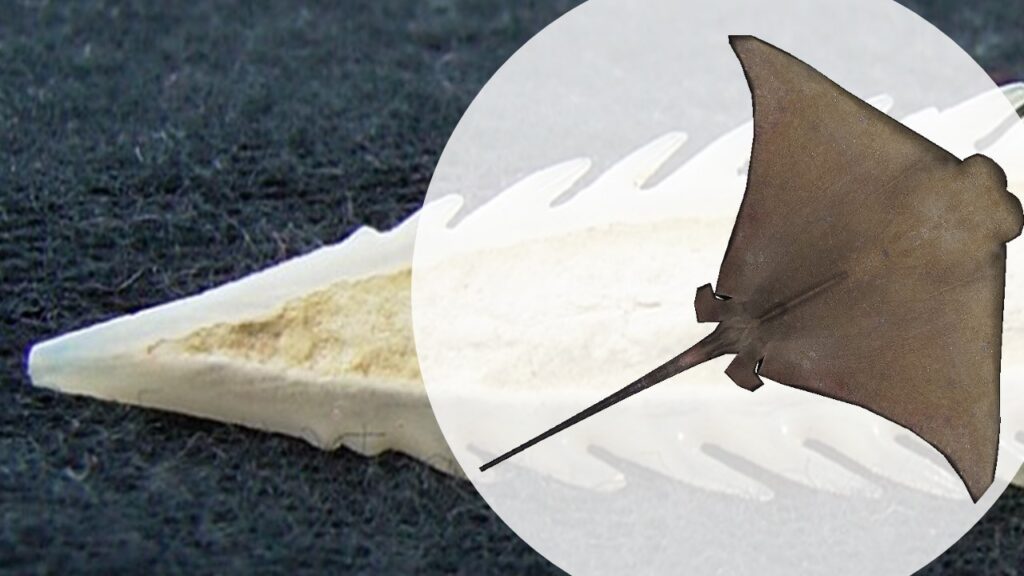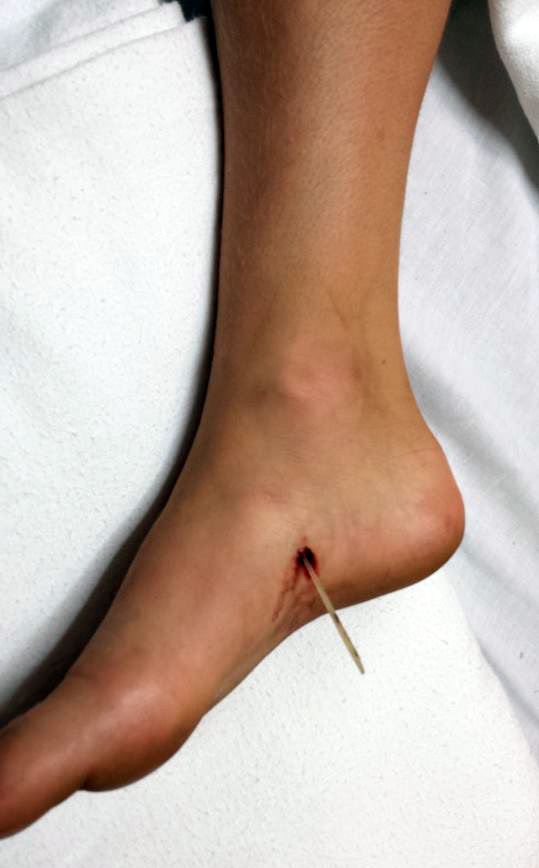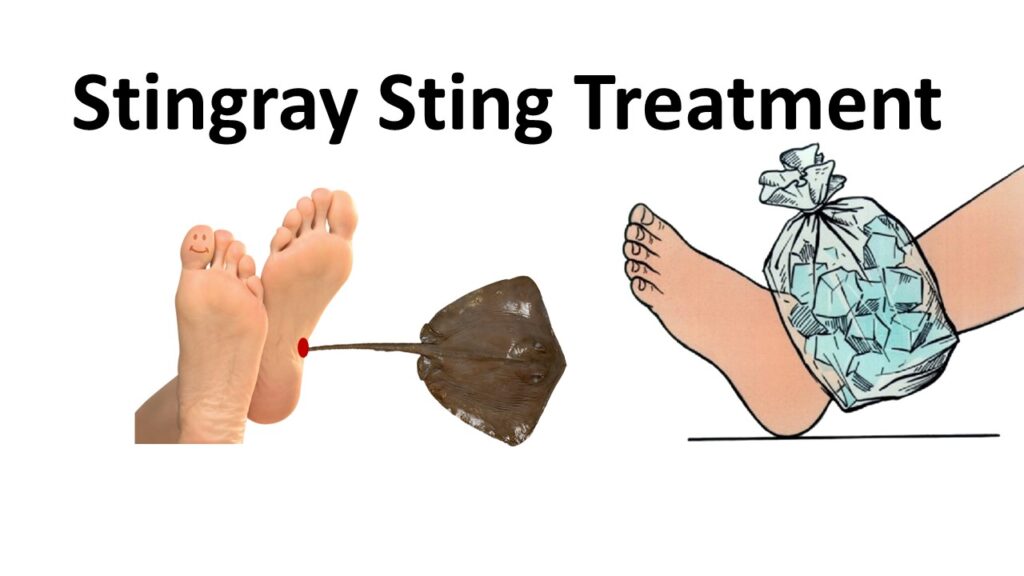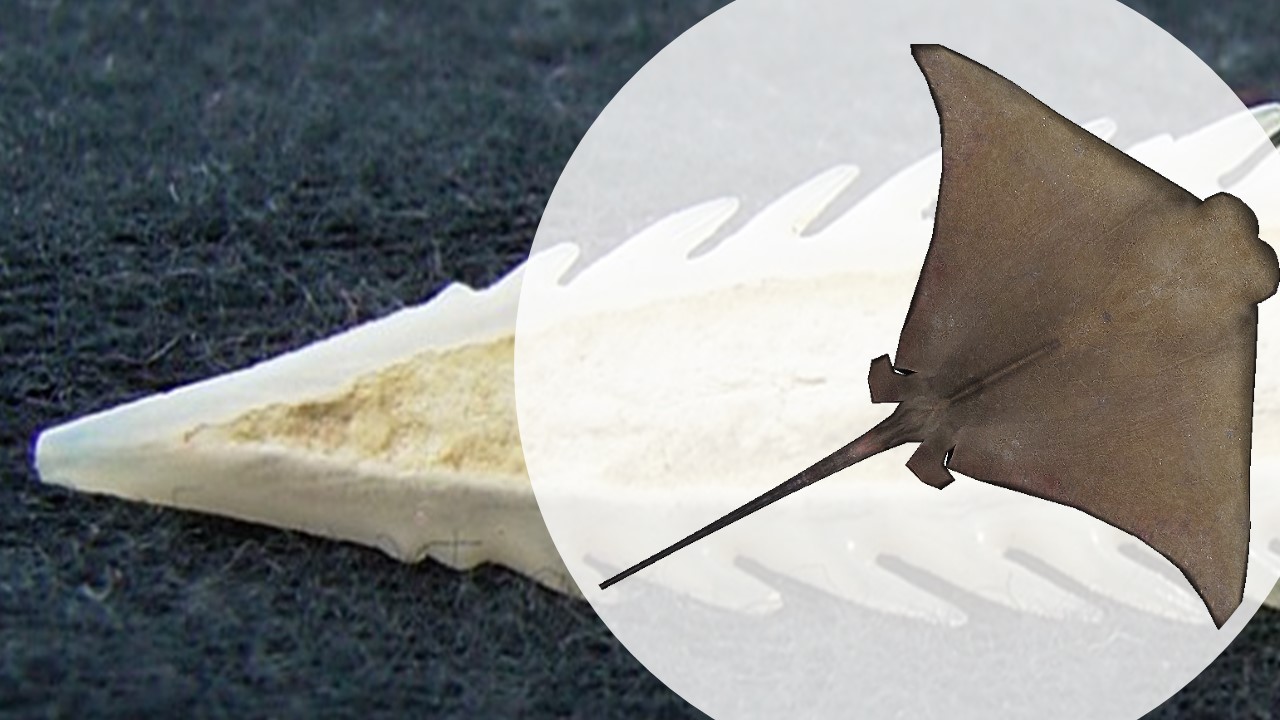Stingray Sting Treatment: Swift Action For Soothing Relief And Rapid Recovery
Looking for stingray sting treatment? Beneath the sparkling surface of tranquil coastal waters lurks an enigmatic creature that commands both awe and caution: the stingray.
With its graceful glide and seemingly harmless demeanor, this marine marvel can transform into a formidable adversary when threatened. A stingray’s sting is not to be underestimated, as its venomous barb delivers an excruciating blow that demands immediate attention.
In this article, we will unravel the intricacies of stingray stings, explore effective treatment options, and empower you with the knowledge needed to navigate this painful predicament. From practical home remedies to medical interventions, we leave no stone unturned in our quest to provide relief, accelerate healing, and safeguard against potential complications.
Stingray Sting Treatment Comprehensive Guide
When faced with a stingray sting, immediate and proper treatment is essential for relieving pain, preventing infection, and promoting healing.
For stingray sting treatment, follow these step-by-step instructions:
1. Bathe Wound And Remove the Spine (if present)
Use seawater to bathe the wound before you pull the person out of the water. After that, pull the person out of the water. If the stingray’s spine or barb is still embedded in your skin, carefully remove it using the following steps:
- Locate the base of the spine where it enters the skin.
- Use clean tweezers or forceps to grasp the spine firmly near the base.
- Pull the spine out gently and steadily in the same direction it entered the skin.
- Avoid squeezing or breaking the spine, as this may release more venom.
Note: You should not remove pieces of the spine from the abdomen, chest or neck. Call 911 immediately in this case.
2. Stop Bleeding
If it is bleeding, you need to apply pressure on it until the bleeding stops.
3. Clean The Wound
After removing the spine, stop bleed and immersing the wound in hot water, clean the stingray sting wound to reduce the risk of infection:
- Wash your hands thoroughly with soap and water.
- Rinse the wound gently with clean water or saline solution to remove any debris or foreign particles.
- Use mild soap and warm water to cleanse the area around the sting.
- Pat the wound dry with a clean towel or sterile gauze.
4. Relieve Pain
Alleviate the pain caused by the stingray sting by following these steps:
- Immerse the affected area in hot water, ideally around 45-50°C (113-122°F), for 30-90 minutes. The hot water helps to neutralize the venom and alleviate pain.
- If hot water is not readily available, use a hot compress or soak a towel in warm water and apply it to the stingray sting.
- Over-the-counter pain relievers such as acetaminophen or ibuprofen can also be taken according to the recommended dosage.
5. Seek Medical Attention
While initial treatment steps can provide relief, it is important to seek medical attention in the following cases:
- Severe pain that does not subside with initial relief measures.
- Excessive bleeding or signs of significant tissue damage.
- Difficulty breathing, chest pain, or other severe allergic reactions.
- Signs of infection, such as increasing redness, swelling, warmth, or pus.
- Stings occurred near a joint, on the face, or in a sensitive area.
- Any other concerns or worsening symptoms.
6. Applying Topical Antibiotics
To prevent infection, apply a thin layer of over-the-counter topical antibiotic ointment to the cleaned stingray sting wound.
This helps create a protective barrier against bacteria and promotes healing. Follow the instructions provided with the product and consult a healthcare professional if you have any allergies or concerns.
7. Dressing The Wound
Depending on the severity of the stingray sting, you may need to cover the wound with a sterile dressing or bandage. This safeguards the area from further contamination and provides an optimal environment for healing. Change the dressing regularly as instructed or if it becomes wet, dirty, or dislodged.
8. Monitoring for Signs of Infection
Keep a close eye on the stingray sting wound for any signs of infection, such as increased redness, swelling, warmth, discharge, or worsening pain. If you notice any concerning symptoms, consult a healthcare professional promptly. They may recommend oral antibiotics to address the infection.
9. Tetanus Immunization
Stingray stings can introduce bacteria into the body, increasing the risk of tetanus. If your tetanus immunization is not up to date or if the sting was particularly deep or dirty, consult a healthcare professional regarding the need for a tetanus shot.
10. Follow-up Care
After seeking medical attention, follow the instructions provided by your healthcare professional. Attend any scheduled follow-up appointments to ensure proper healing and monitor for any delayed complications.
READ ALSO: Do Water Shoes Protect From Jellyfish? Find Out Now!
Stingray Sting Symptoms (Stingray Sting Treatment)
Stingray stings can cause a range of symptoms, which can vary depending on the severity of the sting and individual factors.
By familiarizing yourself with these symptoms, you can better identify if you have been stung by a stingray and determine if medical attention is necessary. Here are the common symptoms associated with a stingray sting:
1. Intense Pain
Stingray stings are known for causing immediate and severe pain at the site of the sting. The pain can be sharp, burning, or throbbing and may radiate to surrounding areas.
2. Swelling and Redness
After being stung by a stingray, the affected area may become swollen, inflamed, and red. Swelling can vary in severity, ranging from mild to pronounced, depending on the individual’s reaction.
3. Bleeding
A stingray sting can sometimes cause bleeding at the site of the sting. The severity of bleeding can vary, from minor oozing to more significant blood loss.
4. Lacerations or Wounds
In some cases, the stingray’s spine or barb can cause lacerations or deep puncture wounds. These wounds may be visible and may require proper cleaning and medical attention.
READ ALSO: What To Do If A Jellyfish Stings You? Essential Steps for Quick Relief
Stingray Venom Effects (Stingray Sting Treatment)
Stingray venom contains a combination of substances that can have various effects on the human body. When a stingray stings, it injects venom into the victim, leading to localized and sometimes systemic effects. Here are some common effects of stingray venom:
1. Immediate Pain and Swelling: The venom of a stingray contains compounds that cause immediate and intense pain at the site of the sting. The pain can be severe and may radiate to surrounding areas. Swelling and inflammation are also common immediate effects of stingray venom.
2. Tissue Damage: The venom of a stingray can cause damage to the tissues at the sting site. The venom components can disrupt cell membranes, leading to cell death and tissue injury.
3. Systemic Symptoms: In some cases, stingray venom can cause systemic symptoms that affect the entire body.
These symptoms may include nausea, vomiting, weakness, dizziness, sweating, and even changes in heart rate or blood pressure. Systemic symptoms are more likely to occur with severe or multiple stings.
4. Allergic Reactions: Some individuals may experience allergic reactions to stingray venom. These reactions can range from mild to severe, including symptoms such as itching, hives, difficulty breathing, or even anaphylaxis—a severe, life-threatening allergic reaction.
5. Secondary Infections: If the stingray sting punctures the skin, it can create an entry point for bacteria, leading to secondary infections. These infections can cause increased pain, redness, warmth, swelling, and the formation of pus.
Make sure to seek medical attention if you have been stung by a stingray to assess the severity of the sting, manage symptoms, and prevent potential complications. Healthcare professionals can provide appropriate treatment and guidance based on the specific circumstances of the sting.
5. Allergic Reaction
While rare, some individuals may experience an allergic reaction to the venom injected by the stingray. Symptoms of an allergic reaction can include:
– Hives or itching in areas beyond the sting site.
– Swelling of the lips, face, throat, or other parts of the body.
– Difficulty breathing or swallowing.
– Dizziness, lightheadedness, or fainting.
– Rapid heartbeat or palpitations.
– Nausea, vomiting, or diarrhea.
If you experience any of these allergic reaction symptoms, it is crucial to seek immediate medical attention, as it may indicate a severe allergic response that requires prompt treatment.
It is important to note that the severity of symptoms can vary from person to person and may also depend on the location of the sting, the depth of penetration, and individual sensitivity.
If you suspect you have been stung by a stingray and experience any of the above symptoms, it is advisable to seek medical attention. A healthcare professional can evaluate the sting, provide appropriate treatment, and offer further guidance.
Home Remedies For Stingray Sting Treatment
For those who prefer natural or home remedies for stingray sting treatment, several options can help alleviate the discomfort and promote healing after a stingray sting.
While these remedies are suitable for minor cases, it’s important to remember that severe or worsening symptoms require medical attention. Here are some home remedies to consider for stingray sting treatment:
1. Baking Soda Paste
Create a soothing paste by mixing baking soda with a small amount of water to form a thick consistency. Apply the paste directly to the stingray sting, allowing it to sit for 10 minutes before rinsing it off with warm water. Baking soda can help reduce pain and itching, providing temporary relief.
2. Aloe Vera Gel
Known for its soothing properties, aloe vera gel can be beneficial for stingray sting treatment. Apply a generous amount of pure aloe vera gel to the affected area and gently massage it in.
Aloe vera helps reduce inflammation, soothes the skin, and promotes healing. Keep the gel refrigerated for an additional cooling effect.
3. Cold Compress
Applying a cold compress to the stingray sting can help numb the area and alleviate pain. Wrap ice cubes or a pack of frozen vegetables in a clean cloth and place it on the affected area for 10 to 15 minutes at a time. Ensure you do not apply ice directly to the skin to prevent frostbite.
4. Witch Hazel
Witch hazel is a natural astringent with anti-inflammatory properties that can help reduce swelling and relieve itching. Soak a cotton ball in witch hazel and gently dab it on the stingray sting. Repeat this process a few times a day for relief.
5. Tea Tree Oil
Dilute a few drops of tea tree oil in a carrier oil, such as coconut or olive oil, and apply it to the stingray sting. Tea tree oil possesses antibacterial properties that can help prevent infection. However, it is important to perform a patch test first, as some individuals may be sensitive to tea tree oil.
6. Honey
Known for its antibacterial and wound-healing properties, honey can aid in stingray sting treatment. Apply a small amount of raw honey directly to the sting and cover it with a sterile dressing. Leave it on for a few hours before rinsing it off. Honey may help soothe the area and promote healing.

Prevention And Precautions For Stingray Stings (Stingray Sting Treatment)
While stingray stings can be painful and potentially dangerous, taking preventive measures and exercising caution can significantly reduce the risk of encountering these enigmatic creatures.
By being aware of your surroundings and following simple guidelines, you can minimize the chances of a stingray sting. In this section, we will explore effective prevention methods and precautions to help you stay safe in stingray habitats:
1. Wearing Protective Footwear
When venturing into stingray habitats, such as sandy beaches or shallow coastal waters, it is advisable to wear protective footwear. Sturdy water shoes or reef-safe sandals with thick soles can provide a barrier between your feet and the ocean floor, reducing the likelihood of stepping on a stingray.
2. Shuffling Your Feet
When walking in shallow waters, especially in areas known to have stingrays, shuffle your feet instead of taking regular strides.
By dragging your feet along the sand or seabed, you create vibrations that alert stingrays to your presence. This technique gives them the opportunity to swim away and avoids accidental contact.
3. Avoid Disturbing Stingrays
Stingrays are generally non-aggressive creatures and will typically retreat when left undisturbed. Avoid touching, chasing, or provoking them, as this may result in defensive behavior and increase the chances of a stingray sting. Admire them from a safe distance, respecting their natural habitat.
4. Pay Attention to Warning Signs
When visiting beaches or coastal areas, be mindful of any warning signs or flags indicating the presence of stingrays. These signs are often posted by local authorities to alert beachgoers of potential hazards. Follow the instructions provided and adhere to any safety guidelines or restrictions.
5. Educate Yourself
Familiarize yourself with the specific stingray species prevalent in your region and learn about their behavior and habits. Understanding their typical habitats, feeding patterns, and breeding seasons can help you make informed decisions and avoid potential encounters.
6. Stay Vigilant in Murky Waters
In areas with poor visibility, such as murky or turbid waters, exercise increased caution. Reduced visibility makes it challenging to spot stingrays, increasing the risk of accidental contact.
Consider relocating to clearer waters or abstaining from activities that involve prolonged contact with the seabed in such conditions.
7. Teach Children and Fellow Beachgoers
Educate children and fellow beachgoers about stingrays and the precautions necessary to avoid stingray stings. Encourage them to shuffle their feet while walking in shallow waters and explain the importance of respecting marine wildlife from a distance.
How Long Does A Stingray Sting Last
The pain from a stingray sting can last for several hours to several days, depending on the severity of the sting and the individual’s response to the venom.
In most cases, the pain will peak within 30 minutes to an hour of the sting and then gradually subside over time. However, some people may experience residual pain for several days or even weeks.
The venom from a stingray sting can also cause other symptoms, such as swelling, redness, numbness, and tingling. These symptoms may also last for several hours to several days.
If you have been stung by a stingray, it is essential to seek medical attention immediately. A doctor can assess the severity of the sting and provide treatment to relieve pain and prevent infection.
Here are some additional tips for managing a stingray sting:
- Soak the affected area in hot water for 20-30 minutes at a time, several times a day. This can help to relieve pain and inflammation.
- Apply an antibiotic ointment to the wound to help prevent infection.
- Keep the wound covered with a bandage to keep it clean and protected.
- Change the bandage daily and wash your hands thoroughly before and after changing the bandage.
- See a doctor if you have any concerns about the wound or if it shows signs of infection.
With proper care, most stingray stings heal without any lasting problems. However, it is important to be aware of the signs of infection and to seek medical attention if you experience any concerns.

What Happens Day After Stingray Sting
The pain from a stingray sting will usually peak within 90 minutes of the sting and then gradually subside over the next 6 to 48 hours. In most cases, the pain will be gone within 2 days. However, some people may experience pain for up to 1 week or even longer.
Other symptoms that may occur after a stingray sting include:
- Swelling
- Redness
- Bleeding
- Numbness and tingling
- Muscle cramps
- Nausea and vomiting
- Diarrhea
- Sweating
- Fever
- Anxiety
- Syncope (fainting)
In rare cases, a stingray sting can be fatal. This is more likely to happen if the sting is in the chest or abdomen, or if the stingray’s venom is particularly potent.
If you have been stung by a stingray, it is important to seek medical attention right away. The doctor will be able to assess your condition and provide treatment if necessary.
Here are some things you can expect the day after a stingray sting:
- The pain will likely be less severe than it was the day of the sting.
- The swelling may be worse than it was the day of the sting.
- The wound may ooze some fluid.
- You may still experience some numbness and tingling around the wound site.
- You may have a low-grade fever.
So, on the day after a stingray sting, it is important to continue monitoring the affected area and taking appropriate measures for healing and recovery. Here are some important considerations and recommendations for the day after a stingray sting:
1. Assess the Sting Site
Take a close look at the sting site and observe any changes or developments. Check for signs of infection, such as increased redness, swelling, warmth, or the presence of pus. If you notice any concerning symptoms, it is advisable to seek medical attention.
2. Keep the Wound Clean
Continue practicing good hygiene by keeping the stingray sting wound clean. Gently wash the area with mild soap and warm water, and pat it dry with a clean towel or sterile gauze. Avoid scrubbing the wound or using harsh chemicals, as this may irritate the area.
3. Apply Topical Antiseptics (if recommended)
If instructed by a healthcare professional, apply topical antiseptics or antibiotic ointments to the sting site to prevent infection. Follow the instructions provided and use the recommended products as directed.
4. Manage Pain and Discomfort
If you are still experiencing pain or discomfort, continue using over-the-counter pain relievers such as acetaminophen or ibuprofen, following the recommended dosage. Applying cold packs or ice wrapped in a cloth to the sting area for short intervals may also help alleviate pain and reduce swelling.
5. Observe for Signs of Complications
Watch for any signs of complications or worsening symptoms. These may include increased pain, spreading redness, excessive swelling, persistent bleeding, or the presence of other concerning symptoms. If you experience any of these, seek medical attention promptly.
6. Avoid Aggravating Activities
Refrain from engaging in activities that may aggravate the stingray sting or delay healing. This includes avoiding swimming in saltwater, hot tubs, or pools until the wound has healed sufficiently. Additionally, be cautious when performing strenuous activities that may strain or reopen the wound.
7. Follow Medical Advice
If you seek medical attention for your stingray sting, ensure that you follow the advice and instructions provided by the healthcare professional. This may include taking prescribed medications, adhering to wound care protocols, or attending follow-up appointments.
If you are experiencing any of the following symptoms, it is important to see a doctor right away:
- The pain is getting worse.
- The swelling is getting worse.
- The wound is oozing a lot of fluid.
- You have a fever of 100 degrees Fahrenheit or higher.
- You are having trouble breathing.
- You are having chest pain.
Most people make a full recovery from a stingray sting within a few weeks. However, it is important to follow your doctor’s instructions and to keep an eye out for any signs of infection.
Remember, everyone’s healing process may vary, and it is essential to listen to your body and seek medical assistance if needed. If you have any concerns or questions about your stingray sting and its progression, do not hesitate to consult a healthcare professional for guidance.

Stingray Sting Swollen After A Week
A stingray sting can cause swelling that can last for several days to weeks. In most cases, the swelling will gradually subside over time. However, if the swelling is still present after a week, it is important to see a doctor to rule out any complications.
There are a few things that can cause the swelling from a stingray sting to last longer than usual. These include:
- The depth of the sting. If the stinger penetrates deeply into the skin, it can cause more tissue damage and inflammation.
- The location of the sting. Stings on the feet or hands are more likely to swell than stings on other parts of the body.
- An allergic reaction to the venom. Some people are allergic to stingray venom, and this can cause the swelling to be more severe and prolonged.
- Infection. If the wound becomes infected, it can also cause the swelling to last longer.
If you have a stingray sting that is still swollen after a week, it is important to see a doctor. The doctor will be able to assess your condition and rule out any complications. They may also prescribe antibiotics to prevent infection.
In most cases, the swelling from a stingray sting will eventually go away on its own. However, if the swelling is severe or does not improve after a week, it is important to see a doctor.
Stingray Sting Healing Process
The healing process of a stingray sting can vary depending on the severity of the sting and individual factors. Here is a general overview of the stages and timeline involved in the healing process:
1. Immediate Reaction
After a stingray sting, the initial reaction involves pain, swelling, and inflammation at the site of the sting. This immediate response is the body’s natural defense mechanism against the venom and foreign objects.
2. Wound Cleansing
In the following days, the body begins the process of cleansing and repairing the wound. White blood cells help remove debris and any potential pathogens present in the area.
3. Tissue Repair
Over the course of several days to weeks, the body initiates tissue repair. New cells start to form, replacing damaged tissue. During this phase, the wound may gradually shrink in size, and the surrounding skin may begin to heal.
4. Scar Formation
As the wound continues to heal, collagen fibers are laid down to strengthen the tissue. This collagen formation contributes to scar tissue development.
The appearance of the scar can vary, ranging from a pale, flat mark to a more raised and noticeable scar, depending on the individual and the nature of the sting.
5. Scar Remodeling
Over time, the scar undergoes remodeling, and its appearance may improve. The scar tissue gradually becomes smoother and less noticeable. This remodeling process can take months to years, and the final appearance of the scar varies from person to person.
The healing process can be influenced by various factors, such as the location of the sting, the individual’s overall health, and any complications that may arise during the healing period.
It is crucial to monitor the stingray sting closely for any signs of infection, such as increasing redness, swelling, warmth, or the presence of pus. If you notice any concerning symptoms or have any questions about the healing process, consult a healthcare professional for evaluation and guidance.
During the healing process, continue to practice proper wound care, maintain good hygiene, and follow any medical advice provided by your healthcare professional. By taking these measures, you can support the healing process, minimize the risk of complications, and promote optimal recovery.

Stingray Sting Long-Term Effects
Stingray stings can have varying long-term effects depending on the severity of the sting and individual factors. While most stingray stings heal without long-term complications, in some cases, there may be lasting effects. Here are some potential long-term effects that can occur:
1. Scar Formation: One of the most common long-term effects of a stingray sting is the formation of a scar at the site of the sting. The appearance of the scar can vary depending on factors such as the depth and size of the wound, the individual’s healing process, and the location of the sting.
Scarring can range from mild to more prominent, and it may fade over time or remain visible.
2. Sensory Changes: In some instances, a stingray sting can affect sensory perception in the affected area. Nerve damage or disruption caused by the sting may lead to altered sensation, such as numbness, tingling, or hypersensitivity.
These effects can be temporary or long-lasting, depending on the extent of the nerve involvement.
3. Joint or Muscle Stiffness: If the stingray sting occurs near a joint or muscle, there is a possibility of long-term stiffness or limited range of motion. Inflammatory responses and tissue damage can result in stiffness and reduced flexibility, requiring physical therapy or exercises to regain normal function.
4. Allergic Reactions: While rare, some individuals may develop an allergic sensitivity to stingray venom following a sting. This can result in an increased risk of severe allergic reactions (anaphylaxis) upon subsequent stingray exposures.
If you have experienced an allergic reaction to a stingray sting, it is crucial to inform your healthcare provider and take appropriate precautions in the future.
5. Emotional or Psychological Impact: For some individuals, a stingray sting can have lasting emotional or psychological effects. Traumatic experiences, pain, or fear associated with the sting may lead to anxiety, fear of water or marine environments, or post-traumatic stress symptoms.
Seeking support from mental health professionals can be beneficial in coping with these effects.
It is important to remember that the majority of stingray stings do not result in long-term complications. However, if you experience any ongoing symptoms, discomfort, or concerns related to a previous stingray sting, it is advisable to consult a healthcare professional for evaluation and guidance.
The Bottom Line On Stingray Sting Treatment
Prompt and proper Stingray Sting Treatment is crucial for effective healing and minimizing potential complications. From immediate relief measures to comprehensive medical interventions, home remedies, and prevention strategies, there are various approaches to address the impact of a stingray sting.
Remember, seeking timely medical attention, practicing good wound care, and taking preventive measures can make a significant difference in your recovery. Prioritize your well-being and ensure you have the knowledge and resources to handle a stingray sting with confidence.



